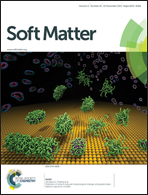A simple model to understand the effect of membrane shear elasticity and stress-free shape on the motion of red blood cells in shear flow
Abstract
An analytical model was proposed by Keller and Skalak in 1982 to understand the motion of red blood cells in shear flow. The cell was described as a fluid ellipsoid of fixed shape. This model was extended in 2007 to introduce shear elasticity of the red blood cell membrane. Here, this model is further extended to take into account that the cell discoid shape physiologically observed is not a stress-free shape. The model shows that spheroid stress-free shapes allow us to fit the experimental data with the values of shear elasticity typical to that found with micropipette and optical tweezer experiments. In the range of moderate shear rates (for which RBCs keep their discoid shape) this model enables us to quantitatively determine (i) an effective cell viscosity, which combines membrane and hemoglobin viscosities and (ii) an effective shear modulus of the membrane that combines the shear modulus and the stress-free shape. This model can also be used to determine RBC mechanical parameters not only in the tanktreading regime when cells are suspended in medium of high viscosity but also in the tumbling regime characteristic of cells suspended in media of low viscosity. In this regime, a transition is predicted between a rigid-like tumbling motion and a fluid-like tumbling motion above a critical shear rate, which is directly related to the mechanical parameters of the cell.


 Please wait while we load your content...
Please wait while we load your content...